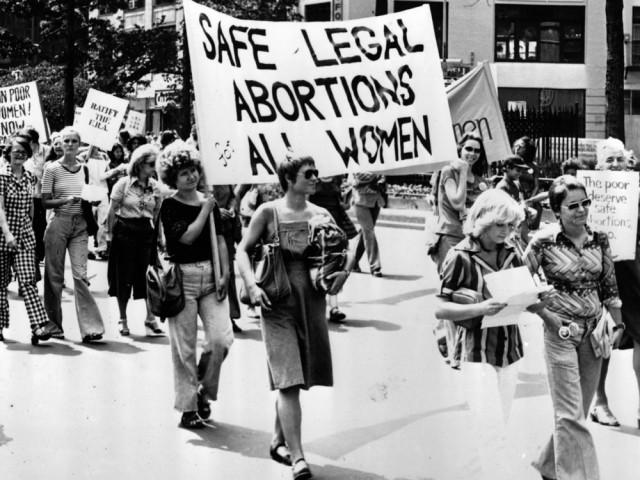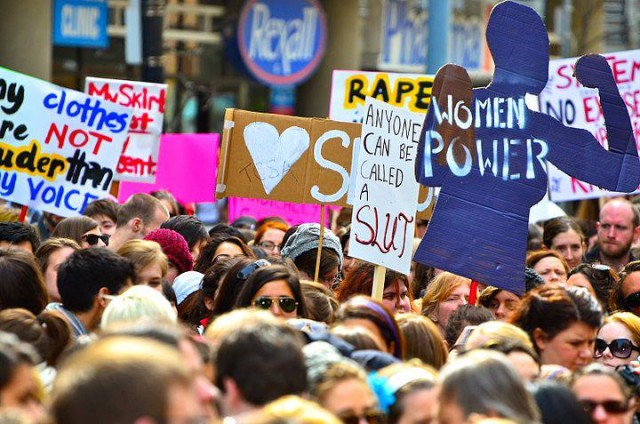Many, or better to state, most people believe that the fight for women’s rights and female empowerment is a relatively new thing, a phenomenon that has occurred only during recent times.
While we can call its being considered *fashionable* a recent phenomenon, Feminism has been a part of our society since the past two centuries.
Moreover, most also believe that it has been the same ever since it began, that the same issues, political and social equality, equal opportunities in terms of education and employment etc have been the focus of it all ever since.
All the objective issues taken up during different phases of what we collectively call the Feminist Movement, were relevant to their times and can be correctly stated as much-needed-need-of-the-hour improvements.
Yes, video games and pop songs weren’t considered anti-feminist since ever.
Worst of all, some people out there also believe that Feminism stands for appraisal of women against men.
Right, if being a girl you like the 1975 better than Madonna, you can still be called a feminist.
Well, let me explain you how.
Feminism, as subjective an issue as it is to the relevant times and practices, has changed the principles it has fought for many times. In its earlier forms, it focused on legal issues and political rights, especially suffrage of women. It had a side-lined focus on marriage, parenting and property rights, with some campaigning activities for reproductive and economic rights. These constituted what is popularly known as the First-Wave Feminism.
It was the most impactful phase of the Feminist Movement as suffrage was granted to women almost all around the world. Also, their economic and political conditions improved considerably.
 Source – http://inretrospectmagazine.com/article/feminism-vs-vintage/
Source – http://inretrospectmagazine.com/article/feminism-vs-vintage/
With the First Wave already strong on official and legal rights, Second-Wave Feminism focused on improvements regarding women’s de facto rights, concerning their social and cultural inequalities and for reforms in family and post-marriage rights. It also drew attention to domestic violence and marital rape issues.
As our society clearly depicts, these issues have not been fully resolved yet, hence, the Second-Wave hasn’t quite died out and is still prevalent in major parts of the world.
 Source – http://rosa.ie/event/rosa-open-discussion-group-personal-political-abortion-rights-won-us/
Source – http://rosa.ie/event/rosa-open-discussion-group-personal-political-abortion-rights-won-us/
The most recent phase is the Third-Wave, which differed from the Second-Wave in quite a few ways. It challenged Second-Wave’s essentialist definitions of femininity and raised issues considering the likes of queer theory and gender-based expectations and stereotypes.
 Source – http://pixshark.com/third-wave-feminism.htm
Source – http://pixshark.com/third-wave-feminism.htm
Then came along the radical idea of what is known as Lipstick Feminism, or even better, Stiletto Feminism, which developed along with the Third-Wave. It challenged the Second-Wave Ideology that women should work on improving their economic, political and personal status, and kind-of ridiculed the idea of the pampered and spoiled upper-middle class women. Put in simple words, the main idea behind Lipstick was that women are empowered by indulging in material subjects such as makeup, expensive clothing, high heels and their sexuality and hence should not be looked down upon on doing so.
Yes, the Lipstick created issues.
Where the Second-Wave glorified workers, the Lipstick glorified models. The Second-Wave depicted the overalls-clad factory woman as the society ideal, since she was seen as working for the betterment of her economic and social standing. The Lipstick portrayed the primped-up socialite as the ultimate feminist, since she was seen as celebrating her femininity and taking full advantage of being a woman.
Because of these clashing ideologies, feminists were sharply differentiated. While both of them centered on women at extreme ends, somewhere along the line, because of very radical and strong ideas regarding what empowered women and what did not, Feminism also came across as man-hating instead of woman-empowering.
Yes, the Lipstick created serious issues.
That is not what the scene was supposed to be. Feminism never talked about making women powerful against men, or projecting beauty as a better asset than intelligence. The main idea was making the two genders equal shareholders of power, regardless of what the genders choose to do with their lives.
It was and is an ideology practiced to empower women, which made it possible for us to live in a world in which we and our mothers can vote, decide whether or not to work, who and when to marry, and whether and when to have children. We have feminists to thank for that.
Feminism is not women>men, but women=men.
The underlying idea that the movement conveys is, empower each and every Woman.
Nothing else.
 Source – http://pixshark.com/third-wave-feminism-sexuality.htm
Source – http://pixshark.com/third-wave-feminism-sexuality.htm
By Snigdha Singh

































